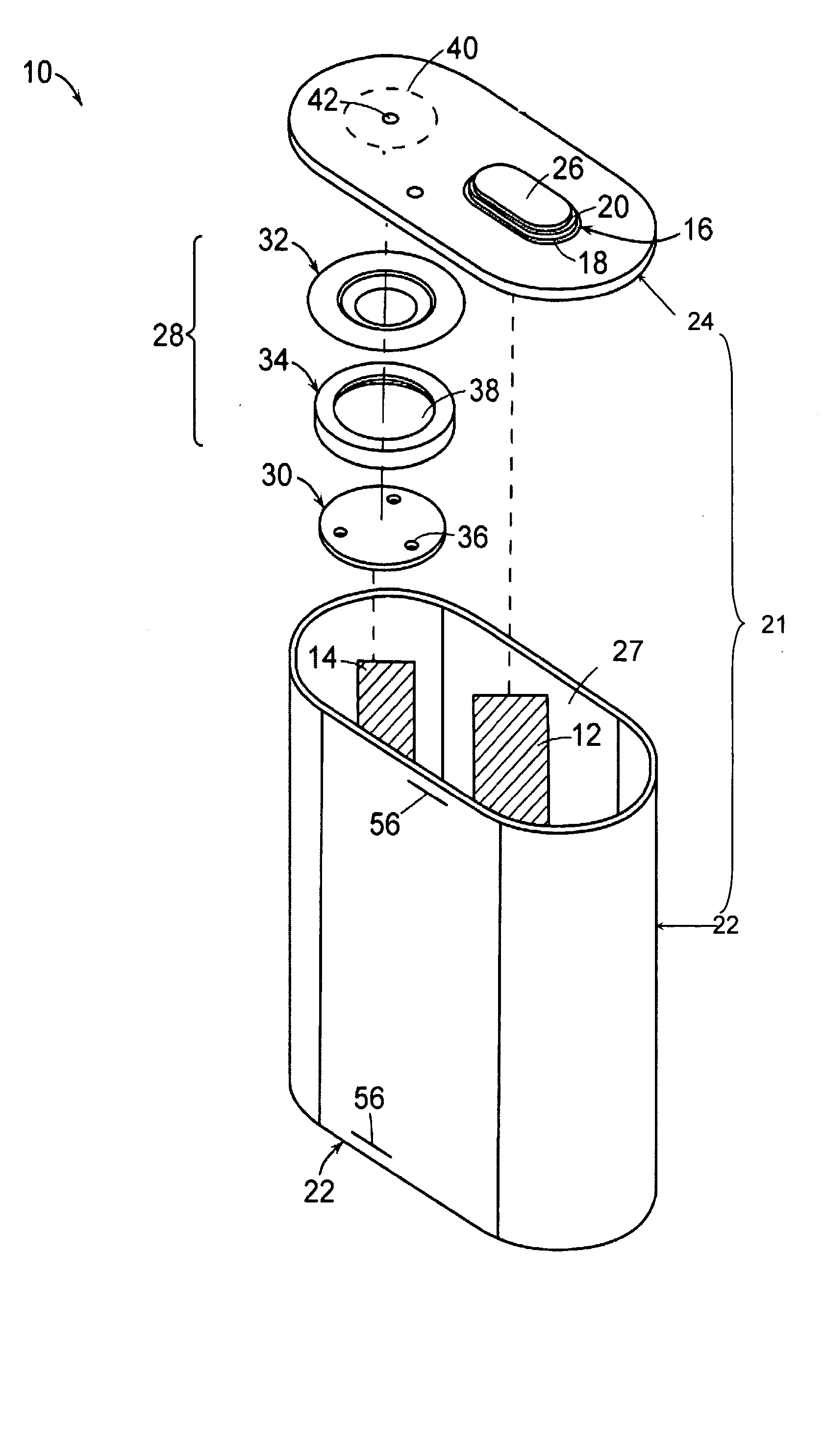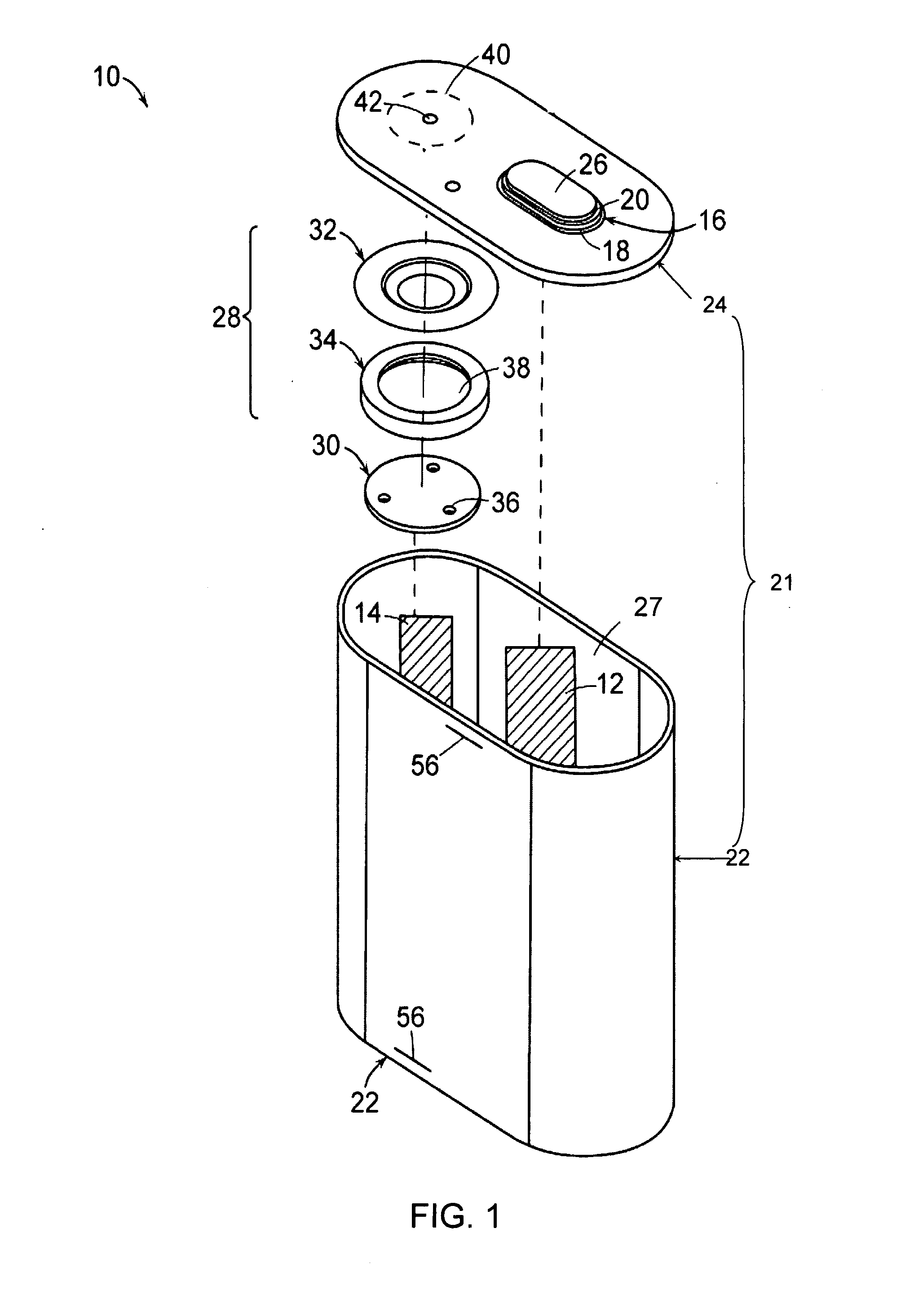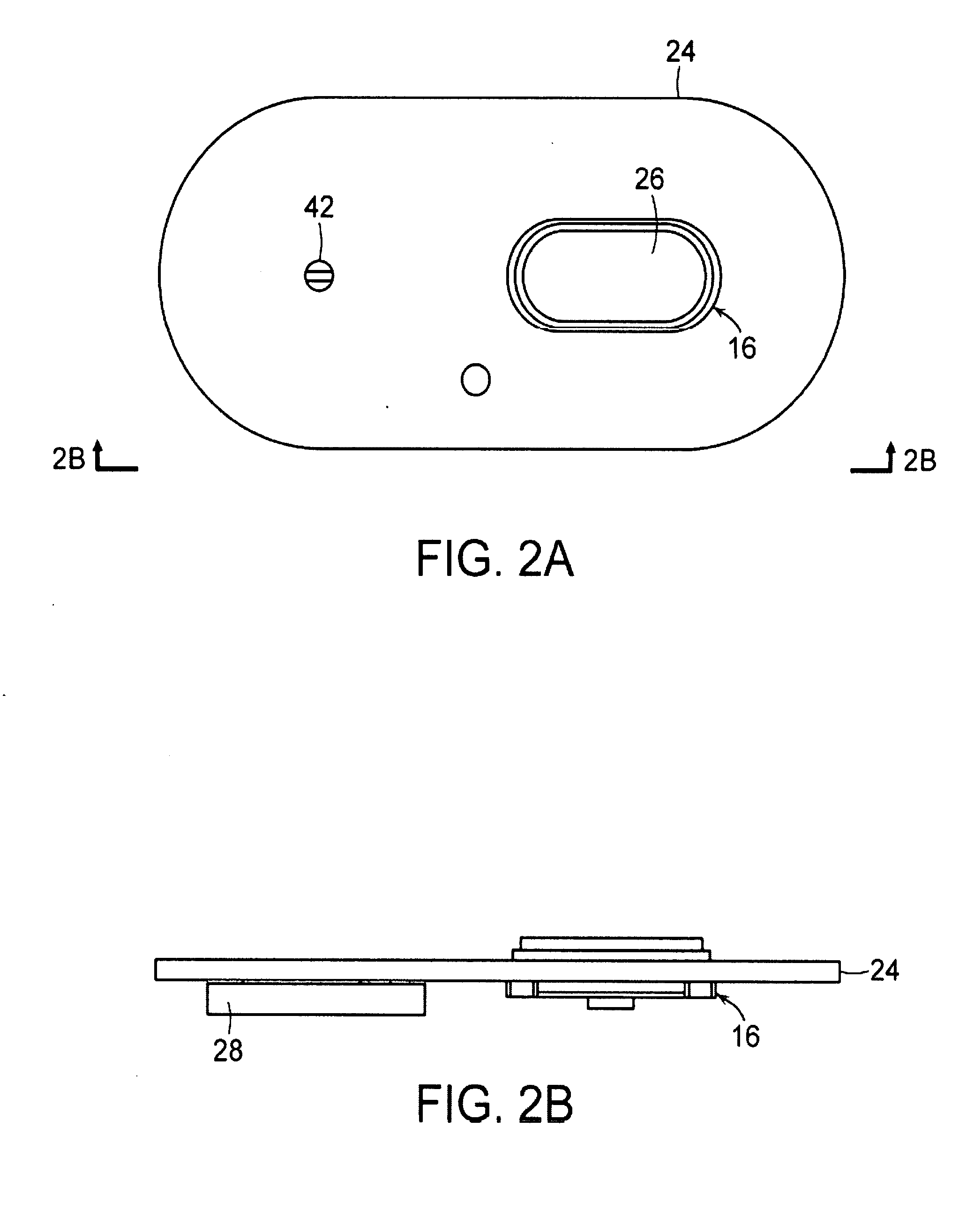Integrated current-interrupt device for lithium-ion cells
a current-interrupt device and lithium-ion cell technology, applied in the direction of batteries, cell components, sustainable manufacturing/processing, etc., can solve the problems of limiting the capacity of batteries by a large amount of space, compromising the reliability and safety of such batteries, etc., to achieve the effect of reducing increasing the cell capacity, and minimizing the space occupied by the cid within the batteries
- Summary
- Abstract
- Description
- Claims
- Application Information
AI Technical Summary
Benefits of technology
Problems solved by technology
Method used
Image
Examples
Embodiment Construction
[0017] The foregoing will be apparent from the following more particular description of example embodiments of the invention, as illustrated in the accompanying drawings. The drawings are not necessarily to scale, emphasis instead being placed upon illustrating embodiments of the present invention.
[0018] As used herein, the “terminals” of the batteries of the invention mean the parts or surfaces of the batteries to which external electric circuits are connected.
[0019] The batteries of the invention typically include a first terminal in electrical communication with a first electrode, and a second terminal in electrical communication with a second electrode. The first and second electrodes are contained within the cell casing of a battery of the invention, for example, in a “jelly roll” form. The first terminal can be either a positive terminal in electrical communication with a positive electrode of the battery, or a negative terminal in electrical communication with a negative el...
PUM
| Property | Measurement | Unit |
|---|---|---|
| Current | aaaaa | aaaaa |
| Shape | aaaaa | aaaaa |
| Electrical conductor | aaaaa | aaaaa |
Abstract
Description
Claims
Application Information
 Login to View More
Login to View More - R&D
- Intellectual Property
- Life Sciences
- Materials
- Tech Scout
- Unparalleled Data Quality
- Higher Quality Content
- 60% Fewer Hallucinations
Browse by: Latest US Patents, China's latest patents, Technical Efficacy Thesaurus, Application Domain, Technology Topic, Popular Technical Reports.
© 2025 PatSnap. All rights reserved.Legal|Privacy policy|Modern Slavery Act Transparency Statement|Sitemap|About US| Contact US: help@patsnap.com



